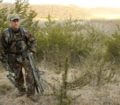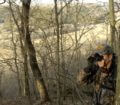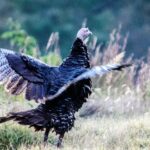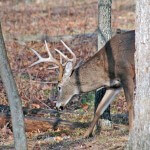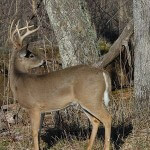Editor’s Note: To learn more about the deer living on your hunting-club or hunting-lease lands, I’ve talked with Brian Murphy, a wildlife biologist and the executive director for the Quality Deer Management Association (QDMA) https://www.qdma.com/, about the effective use of motion-sensor cameras for better deer management and to better protect deer. Murphy says that this type of deer census may capture photos of 95% of a deer herd in 10 days.
 John E. Phillips: Brian, what is a hit list and a protect list?
John E. Phillips: Brian, what is a hit list and a protect list?
Brian Murphy: In my opinion, this is one of the most-exciting and fun ways to manage deer. If you’ll go to the time and trouble to adequately check out your deer herd with motion-sensor cameras, then you can set-up a hit list and a protect list of your bucks. Here’s how. If you do a deer census before hunting season, you can choose the bucks you or members of your hunting lease want to harvest. Once you’ve selected the photographs of the bucks you want to take, you can create a mug shot catalogue of the bucks for each of the members in your hunting lease. The bucks you’ve chosen to be harvested are on the hit list. Likewise, the bucks you want to leave in the herd to grow and reproduce another year are on the protected list. Before the season starts, all the hunters who will hunt that particular piece of property should receive a copy of the hit and protect lists, so they can identify the bucks they need to look for and take in the upcoming season. Too, the hunters will know what bucks have been chosen for protection.
Hit and protect lists provide hunters with a great preview of the bucks they’re likely to see while hunting in the upcoming season. Then hunters are more likely to make the right decisions about which bucks to harvest and which bucks to leave in the herd. T he hit and protect lists will allow hunters to see and identify most of the bucks on the property. Some hunting clubs break their hunting lease into sections and then give their members a hit and pass lists based on the section where the buck has been photographed. If you see the bucks that have been photographed, you’ll know which ones you should and shouldn’t take.
he hit and protect lists will allow hunters to see and identify most of the bucks on the property. Some hunting clubs break their hunting lease into sections and then give their members a hit and pass lists based on the section where the buck has been photographed. If you see the bucks that have been photographed, you’ll know which ones you should and shouldn’t take.
Another advantage to the hit and protect lists is that they enable you to identify bucks that fall through the cracks of a management system. For instance, if you’re managing your land to take 3-1/2-year-old bucks and older, along with an 8-point and an 18-inch-spread minimum for bucks that are to be harvested, then if you do your photo survey before the season, and you identify a 3-1/2, a 4-1/2 or a 5-1/2 year-old buck that’s only a 6 or a 7 point, you can put him on the hit list. Then he’ll be available for harvest, even though he may not have 8 points and may not be 18 inches or wider between his main beams.
If you do a photo census every year, you can identify individual bucks often by their racks and see and recognize whether there are bucks that aren’t performing up to standard and that need to be removed out of the herd. Motion-sensor cameras are very effective tools to determine when and if individual bucks that are substandard need to be removed from the herd, especially if you do a photo census every year so that you have a good knowledge of the growth rate of the bucks on your property.
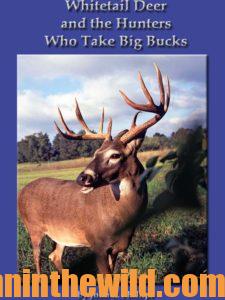 To learn more about hunting deer on this land, go to John E. Phillips’s book, “Whitetail Deer and the Hunters Who Take Big Bucks” at https://www.amazon.com/Whitetail-Deer-Hunters-Take-Bucks-ebook/dp/B01KU0O1KY, available in Kindle and print versions.
To learn more about hunting deer on this land, go to John E. Phillips’s book, “Whitetail Deer and the Hunters Who Take Big Bucks” at https://www.amazon.com/Whitetail-Deer-Hunters-Take-Bucks-ebook/dp/B01KU0O1KY, available in Kindle and print versions.
 To receive your free book on “How to Make Venison Jerky,” go to https://www.emailmeform.com/builder/form/Ece3UZVcOo52cKPJcL.
To receive your free book on “How to Make Venison Jerky,” go to https://www.emailmeform.com/builder/form/Ece3UZVcOo52cKPJcL.

